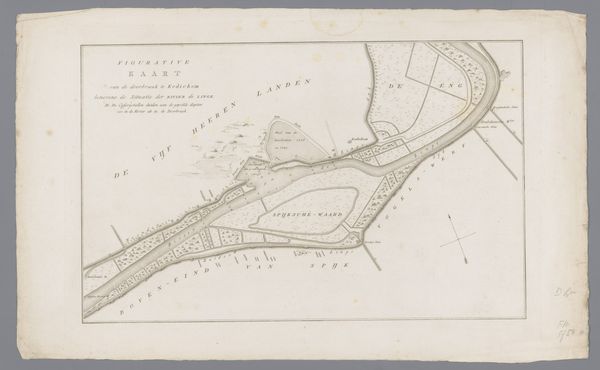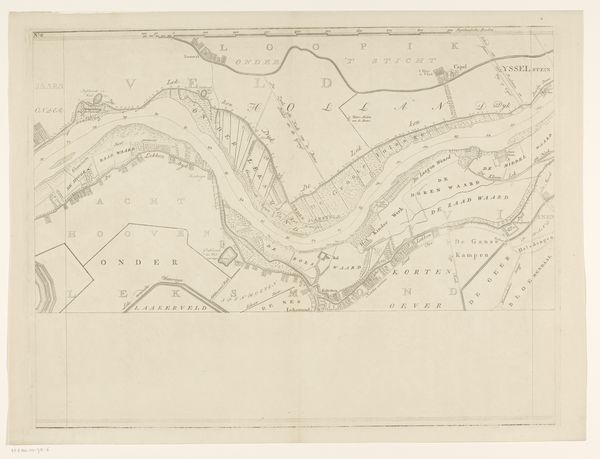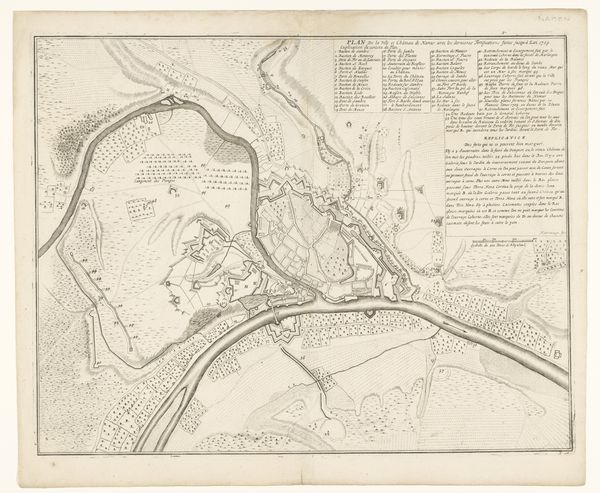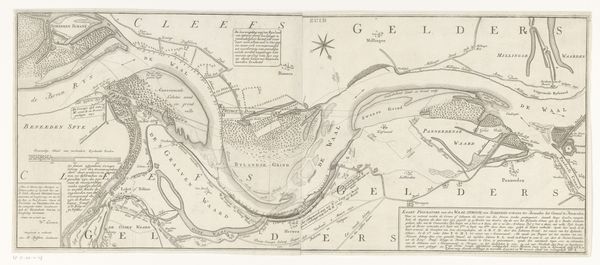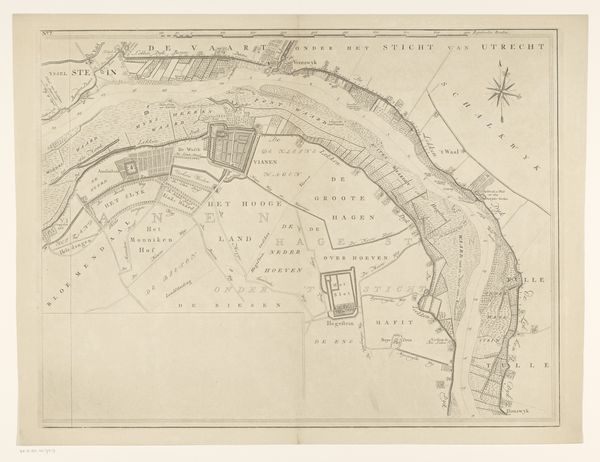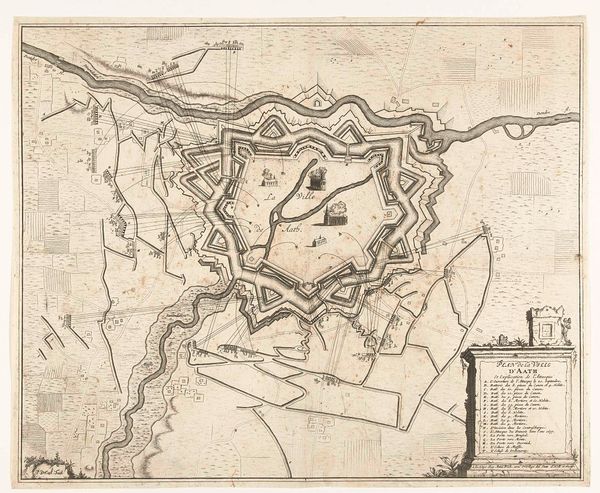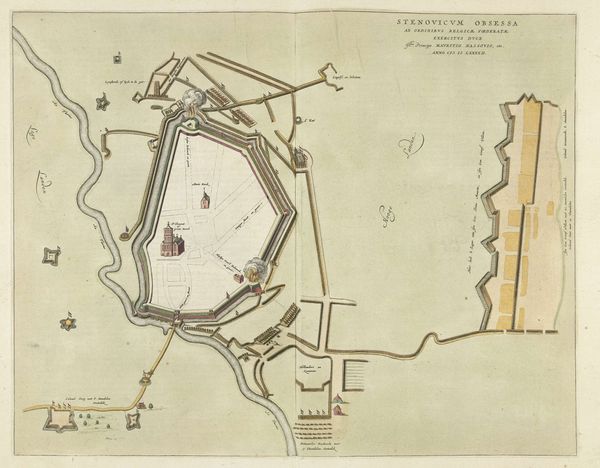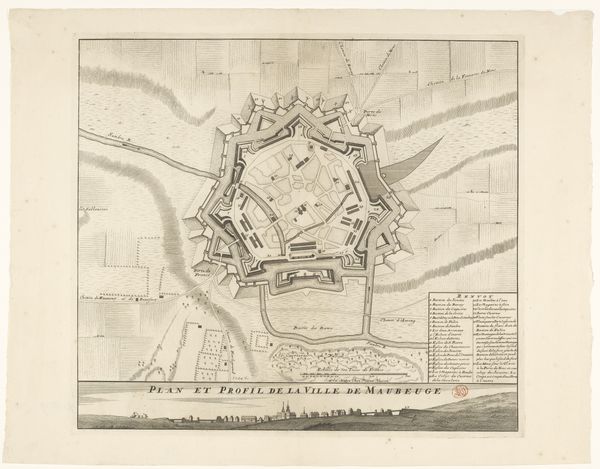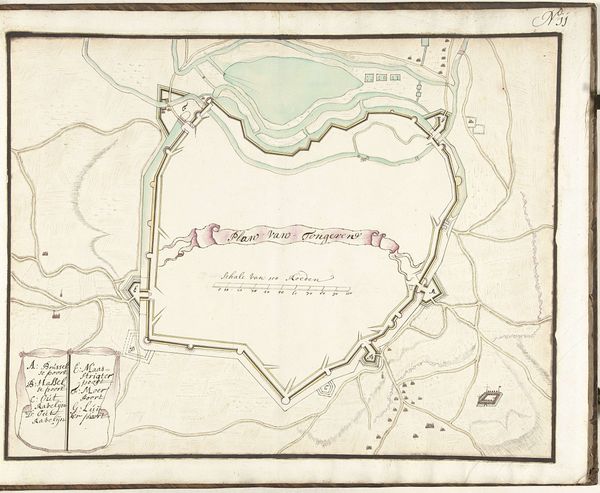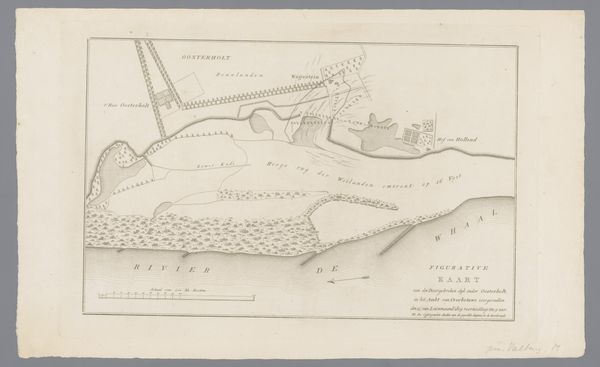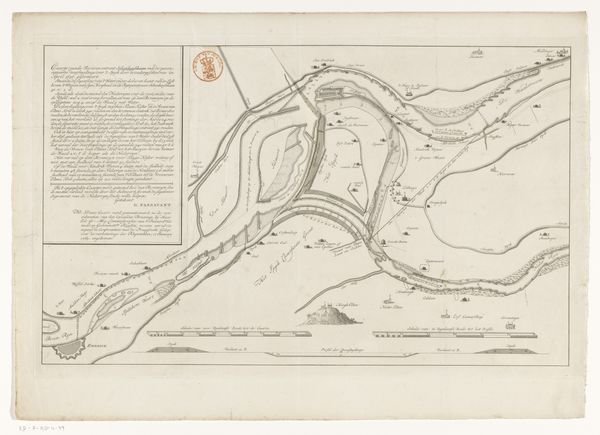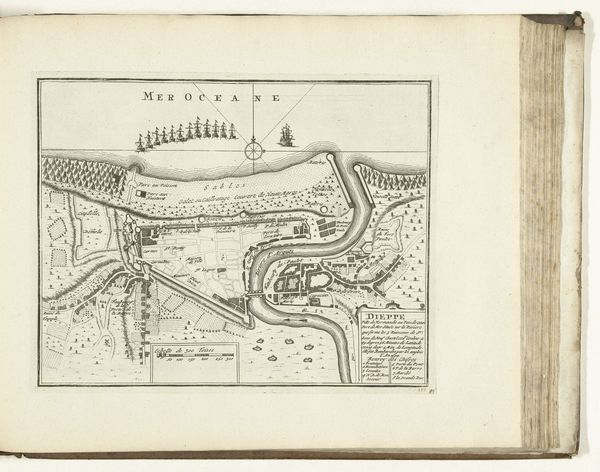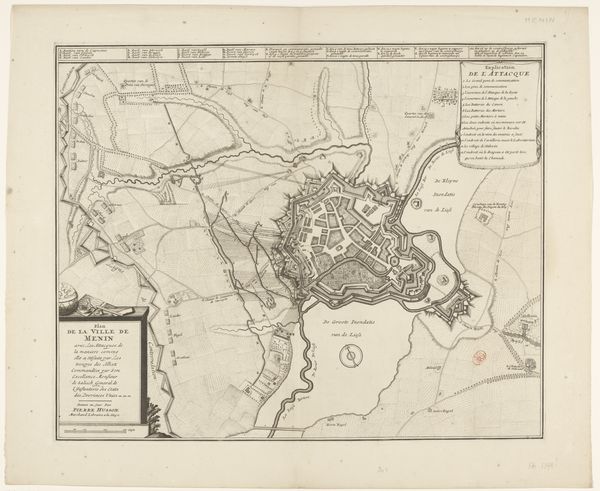
drawing, print, engraving
#
drawing
# print
#
pencil sketch
#
old engraving style
#
landscape
#
river
#
geometric
#
pen-ink sketch
#
history-painting
#
engraving
Dimensions: height 943 mm, width 972 mm
Copyright: Rijks Museum: Open Domain
Curator: Let's discuss this fascinating map by Leonardus Schenk Jansz, dating back to 1773. It’s entitled "Kaart van de Waal rond Herwen en de Bijlandse Waard," and appears to be an engraving combined with drawing. Editor: It has such an airy feel about it, doesn’t it? All these swirling lines… like trying to hold water in your hands. Kind of melancholic, almost. Curator: Definitely a functional object, intended for navigation and documenting land ownership. The materials - the paper, ink, the engraving process itself- speak to an age of meticulous craftsmanship and surveying, before our contemporary digital rendering. The detailed linework probably involved numerous artisans. Editor: Absolutely, I’m drawn to the visual hierarchy. You've got the sweeping river currents, emphasized, contrasted with tiny meticulous houses clustered along the lower part. The Waal seems indifferent to them, majestic. You get a real sense of human vulnerability against nature’s powerful currents. Curator: It reminds me how waterways have shaped the social and economic geography, acting as trade arteries and defensive borders, essential for regional development. Think of how property and infrastructure must relate specifically to waterways in the 18th century Netherlands. Editor: True! Makes me consider the people, you know? Did Schenk himself stand on the banks sketching, fighting off mosquitos? Or did assistants handle the grittier fieldwork before it all came together in his studio? What narratives aren’t visualized on the page itself about labor of creating something this exact and careful. Curator: It really pushes back against this romantic view of solitary genius to consider art in the Netherlands. These projects usually needed patrons who provided income in exchange for recording details of landscapes they profited from in someway. It highlights how art and economy can exist in symbiotic loops. Editor: You can spend a whole afternoon staring at those wispy details and imagining other possible details that are gone or left out of it. Still, somehow even in its cool exactitude, there is poetry present. It sparks our imagination in unexpected ways. Curator: Indeed. By considering maps as complex documents with layered histories of making, distribution, and the communities who would consume the maps gives insights into art's cultural significance and material conditions. Editor: Yes, like trying to chart out meaning in a world of ever-shifting currents, you could say. A timeless pursuit for both art and science.
Comments
No comments
Be the first to comment and join the conversation on the ultimate creative platform.
